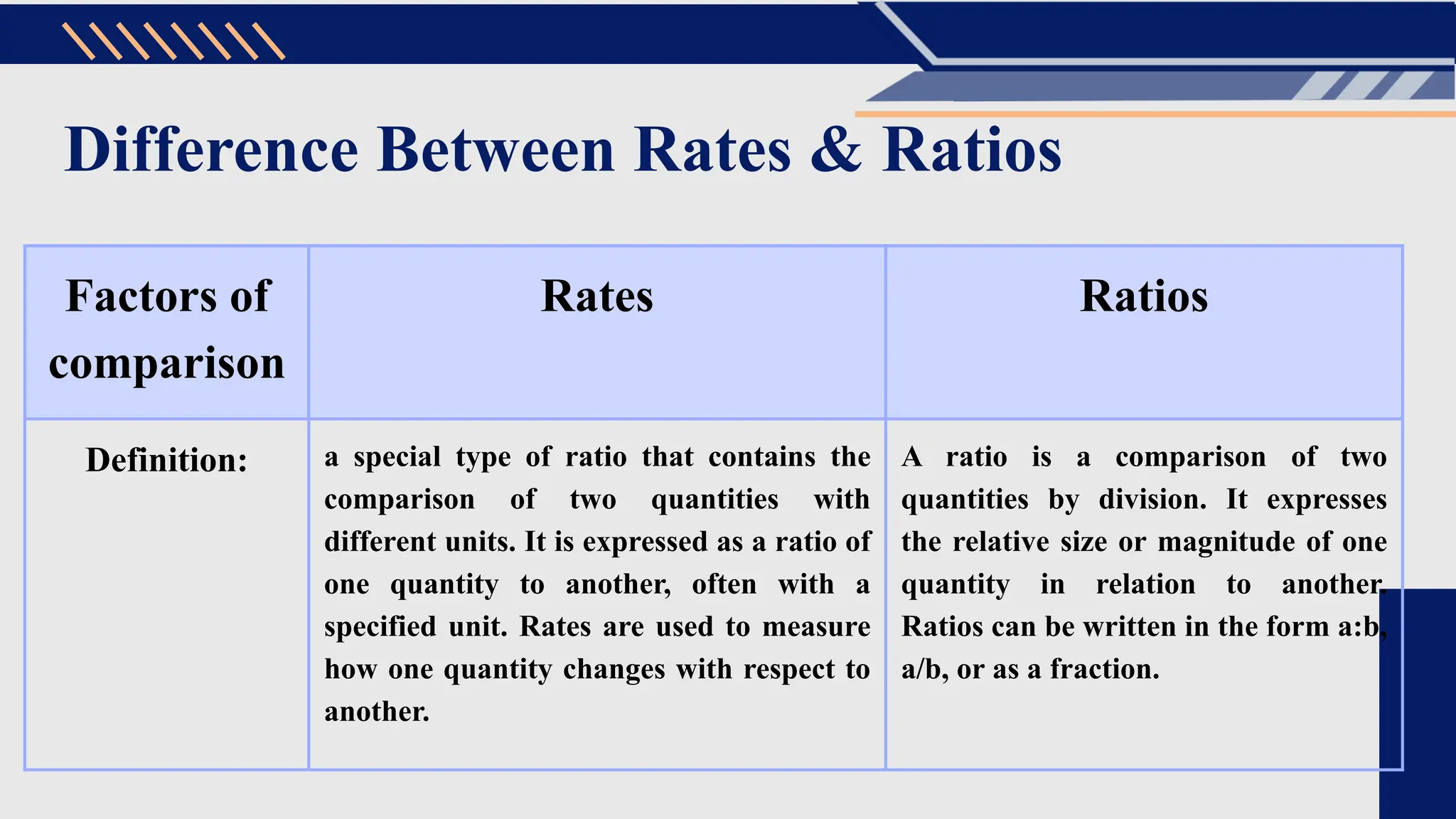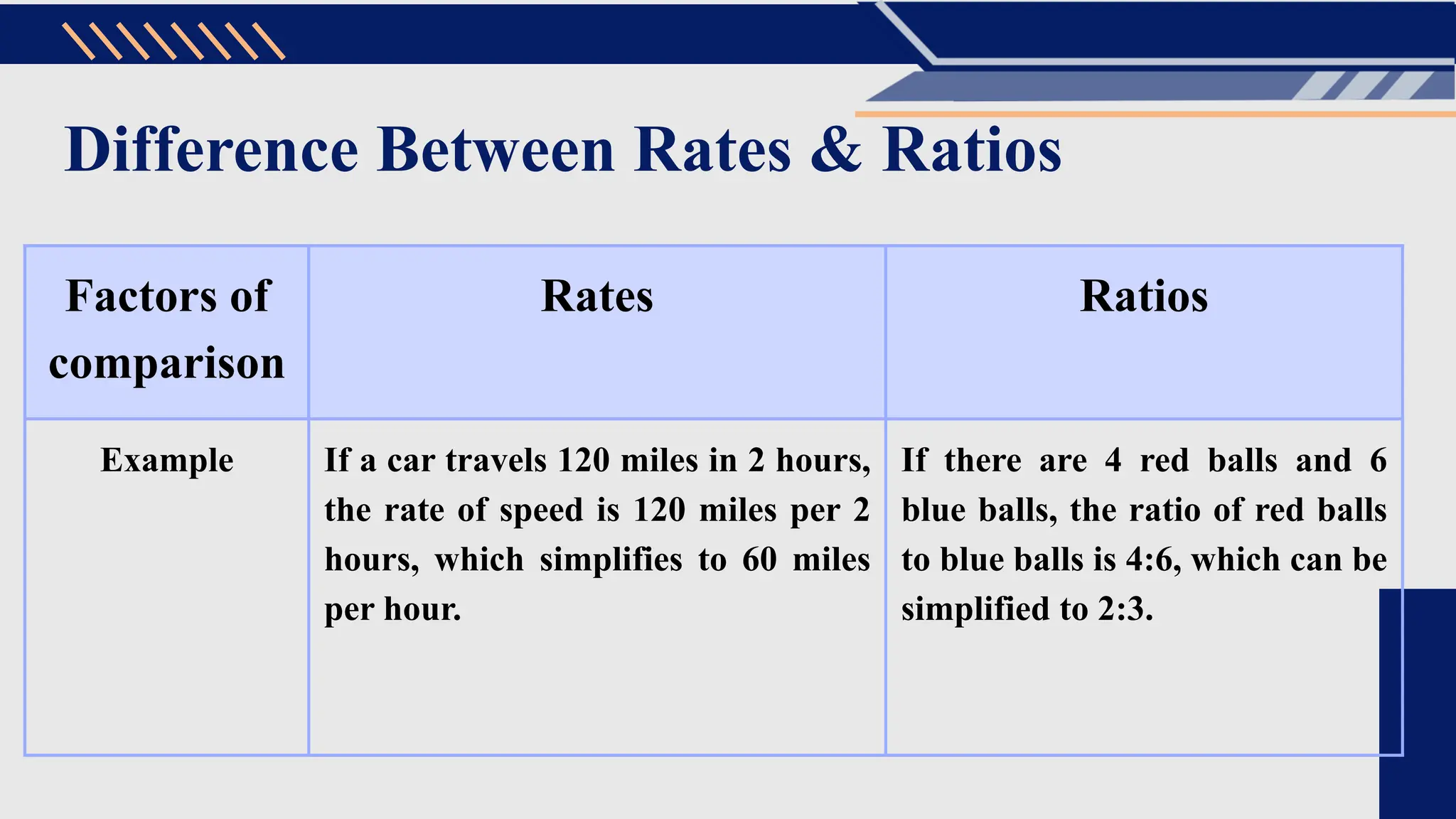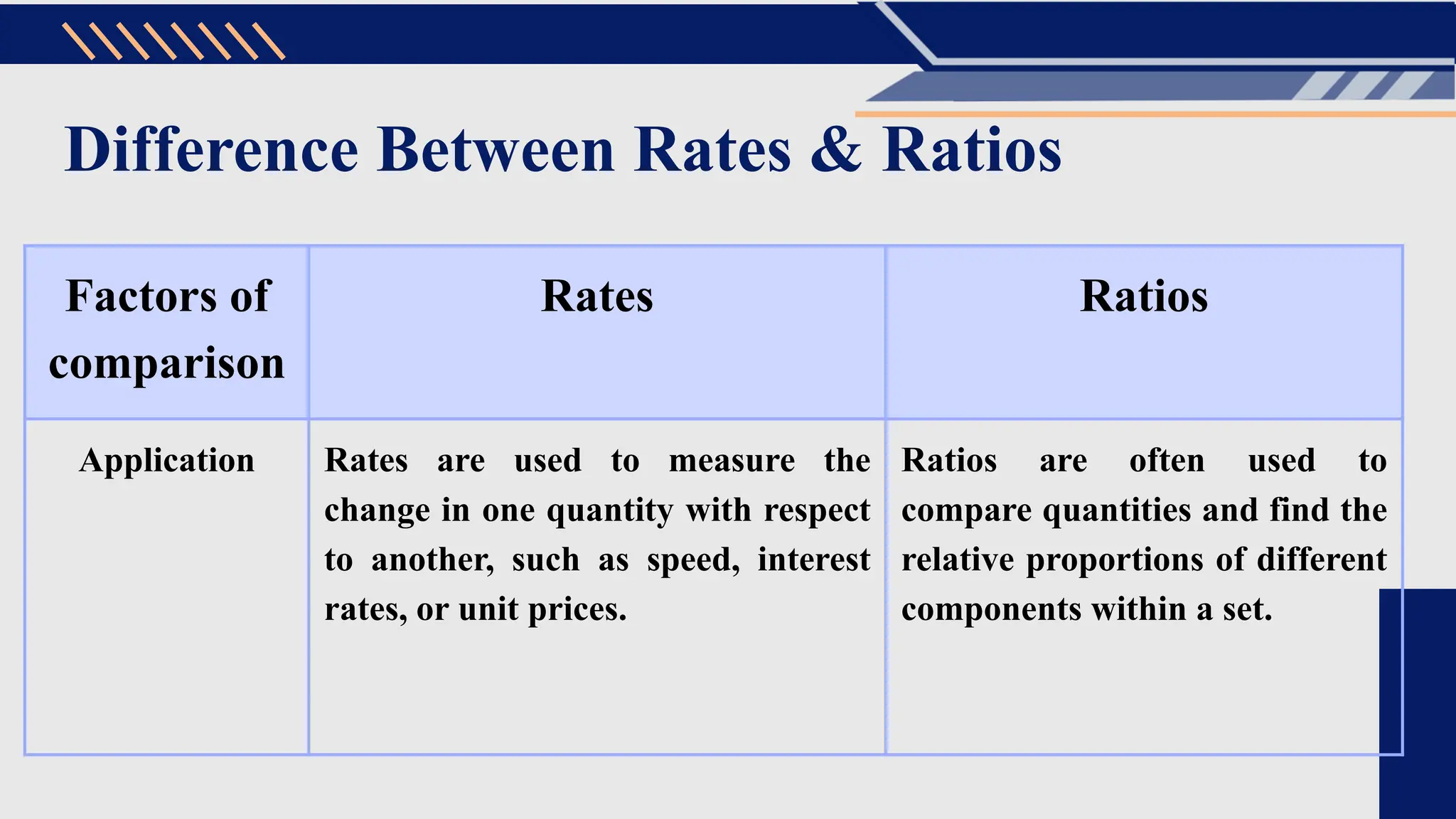Rates and ratios are mathematical concepts used to compare quantities and express relationships between them. Ratios compare two quantities, while rates compare quantities with different units, both being essential for understanding proportions and relationships in various fields like finance, science, and daily life. Mastery of these concepts enhances problem-solving skills and informed decision-making.



















